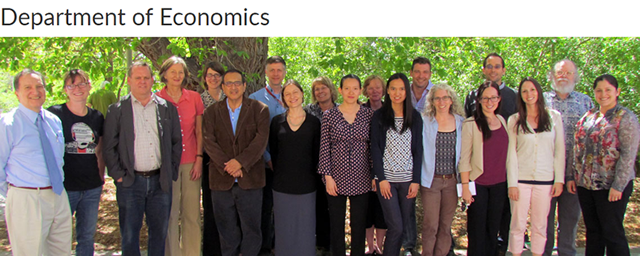
Economics ETDs
Publication Date
5-1974
Abstract
A review of the professional literature on migration written in the past decade suggests that motivation for migration is a composite of interrelated economic, geographical, and social factors. Economic factors are generally believed to be of primary importance and of first consideration when an individual contemplates relocating. It is assumed that the migrant is maximizing his household desires and aquisitions while keeping within the parameters of the family income or budget. If he can improve or increase this income, then he can reach a new maximization level under the new constraints. Thus, to continue to maximize the environment desirability for the family, a change of Jobs is often undertaken. Where the job is of a distance great enough that commuting becomes difficult or impossible, a residential relocation will also occur. But is a Job change the main reason for long-distance moves?
It is the purpose of this paper to suggest a model for migration to and from the state of New Mexico and to report results of this model. Net migration flows from and to New Mexico are used and the variables tested are family median income, unemployment, distance, temperature, and population. These variables are tested using multiple regression analysis.
The results show that there is a tendency for people to move from lower income states to higher income states. The income variable has the expected sign in both the in- and out-migration regressions and is significant for migrants moving to New Mexico. The unemployment rates had unexpected signs and were not significant indicating that unemployment rates are not good indicators of employment opportunities.
Distance played an important role for net outmigration--the closer the state the more migrants from New Mexico. This was displayed for in-migration by the fact that the contiguous states and California contributed in gross figures more than half of the migrants to New Mexico's in and out-migration streams. Migrants showed a tendency to seek more temperate climates in all cases. The most significant variable, population, displayed that the larger the state, the more its contribution to the migration streams.
Degree Name
Economics
Level of Degree
Masters
Department Name
Department of Economics
First Committee Member (Chair)
Gerald Joseph Boyle
Second Committee Member
Albert Marion Church III
Third Committee Member
Peter Gregory
Language
English
Document Type
Thesis
Recommended Citation
Perry, William H.. "Determinants Of Population Migration For The State Of New Mexico.." (1974). https://digitalrepository.unm.edu/econ_etds/154
